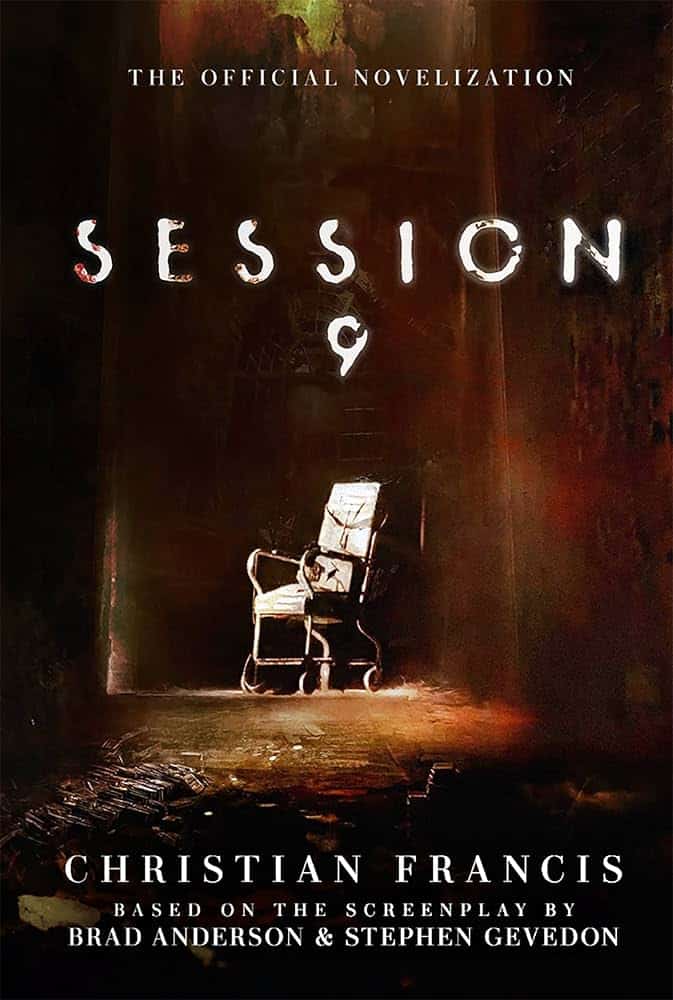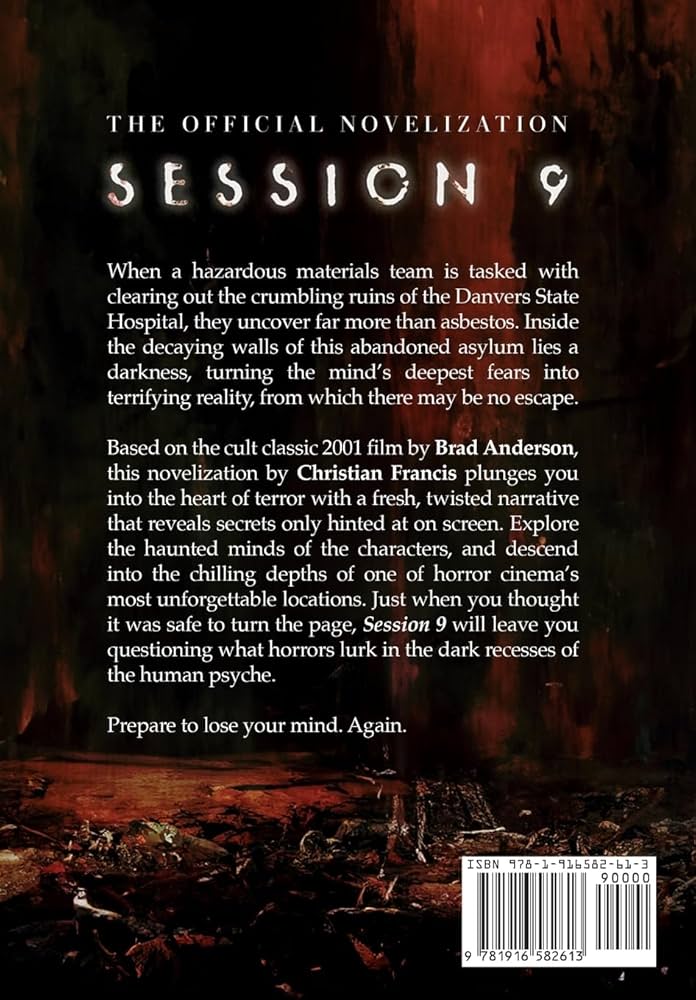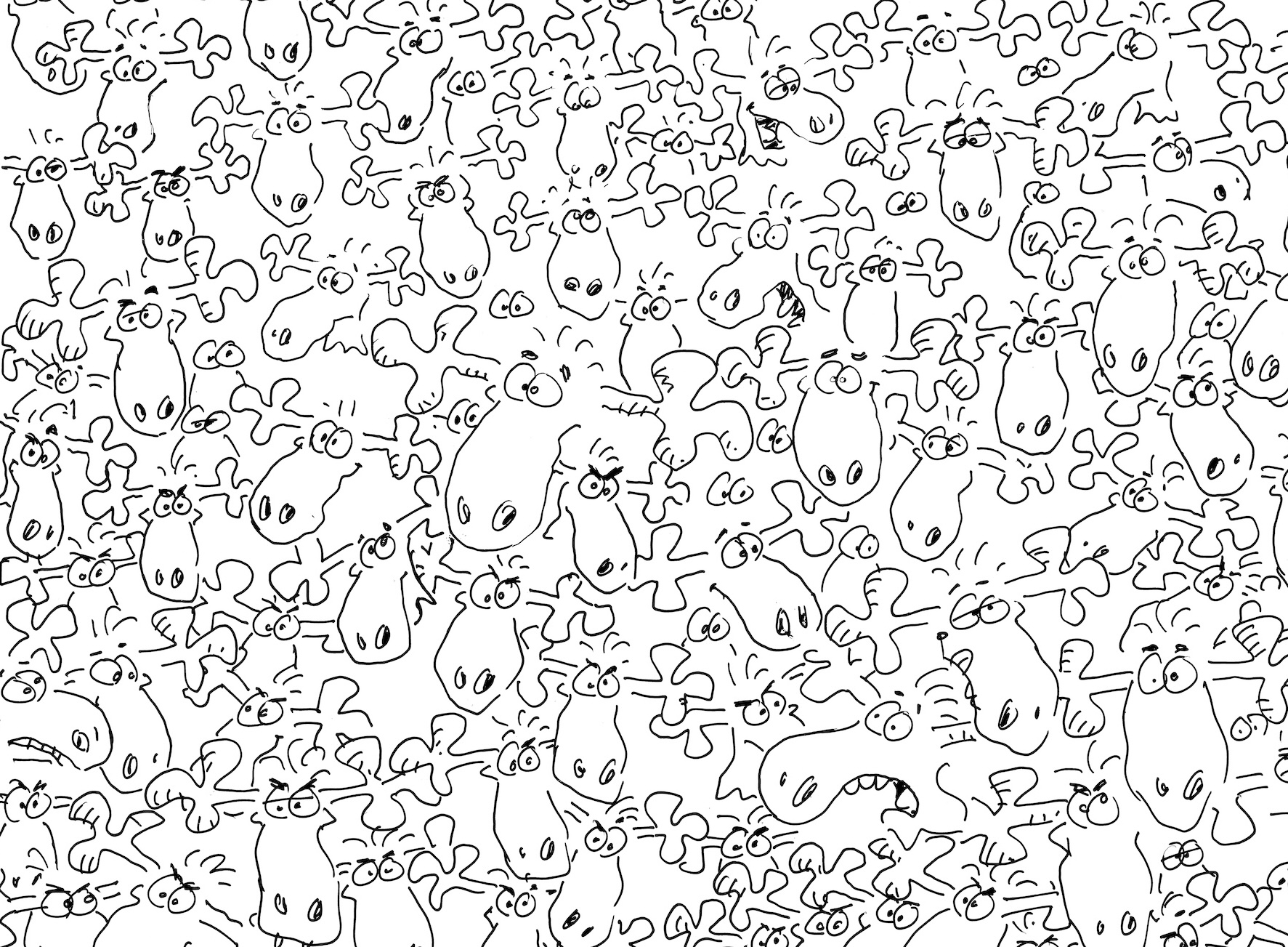Brad Anderson’s 2001 movie Session 9 has earned its modern horror classic status. It’s the story of a group of asbestos removal workers that take a job at the Danvers State Mental Hospital, an abandoned place haunted not just by the memory of mistreatment and cruel psychological experimentation, but also by the ghosts of its most violent patients. What sets it apart is its subtlety. The movie excels at keeping the uglier things off-camera, for the most part, so that audiences can populate its darkness with horrors worthy of it. It’s a masterclass in tension and dread, and now it’s gotten a film novelization treatment by author Christian Francis (based on the script by Anderson and Stephen Gevedon).
For those who haven’t seen the movie, the story follows a man called Gordon, the head of the asbestos removal team. Gordon is a desperate man. He has a wife and a baby back home, but he’s barely making ends meet and stress is building. A job at an abandoned asylum comes up and he bids hard to get it, making impossible promises on timelines to secure the contract. His team gets the assignment, but the asylum comes with unknown challenges of its own. Strange patient records reveal terrible histories, and disembodied voices haunt the already fragile minds of the asbestos removal team (for it is not just Gordon who comes into the job with deep personal struggles).
The movie lends itself quite well to prose thanks to the vague nature of its narrative. Christian Francis (who has also turned Wishmaster and Vamp into novels) is well aware of the fact that this approach is what anchors the story’s most terrifying elements and what builds upon the intentionally unstable haunting at its heart. As such, new character details or new patient revelations are treated with the same minimalistic mindset that made the movie so unsettling.
That said, Francis’ additions are meaningful enough to make each character share in and feed off the anxious energy that Gordon radiates so intensely. Phil, Hank, Jeff, and Mike (the rest of the asbestos team) all get their psyches probed just a bit further to get at their own existential crises. Phil’s revelation in particular adds a very distinct dimension to his character that frames the reasons why he took the job seem sadder, pitiful even. It even alters a key scene in the movie, giving it more weight in relation to how Gordon views him within the group. Whereas the movie only hints at personal troubles, Francis confirms them and makes them even more dire.
In essence, where the movie presents us with a cast of lost souls working a job no one in their right mind would want in a decrepit place that exploits their despair, Francis’ novelization gives us a cast of broken men that have no one else to blame but themselves for the life choices that led them to an asbestos removal job in a haunted asylum.
There’s a difference between the two, and Francis succeeds at making sure one doesn’t come into conflict with the other. As such, people that come into Session 9 via the novelization first are still guaranteed a frightening and disturbing read that stands on its own. It is not exclusively written for fans of the movie. Those who’ve seen it beforehand just have the added benefit of identifying and enjoying the extra bits that aren’t present in the movie. Also, there are a few dialogue and patient recording sequences that speed up the action in ways that ape the movie’s editing style. They’re quite impressive and achieve the desired effect.
The only part of the book I somewhat questioned is the ending. It goes on for a moment longer and it gives a more definitive conclusion to one of the characters. I’m not entirely sure it needed it, but it is executed well. Fans of the movie will wrestle with this, but I didn’t consider it a massive development that turned the story into something else entirely.
Christian Francis has pulled off an impressive feat with the Session 9 novelization. It’s not that he merely brought the story from celluloid to prose effectively. It’s that he took a work based on nuance and built upon it without betraying its core tenets. There’s a fair amount of new information in the book version, but it’s all brought forth with a serious appreciation for the ideas that started it all. Francis expanded upon a work that values inference and interpretation by offering just enough to let readers imagine more sinister things. In the process, he made sure the novelization became an essential part of the Session 9 experience.
For more on Session 9, read Zack Quaintance’s take on the film as a meditation on the horrors of work.






















 English (US) ·
English (US) ·